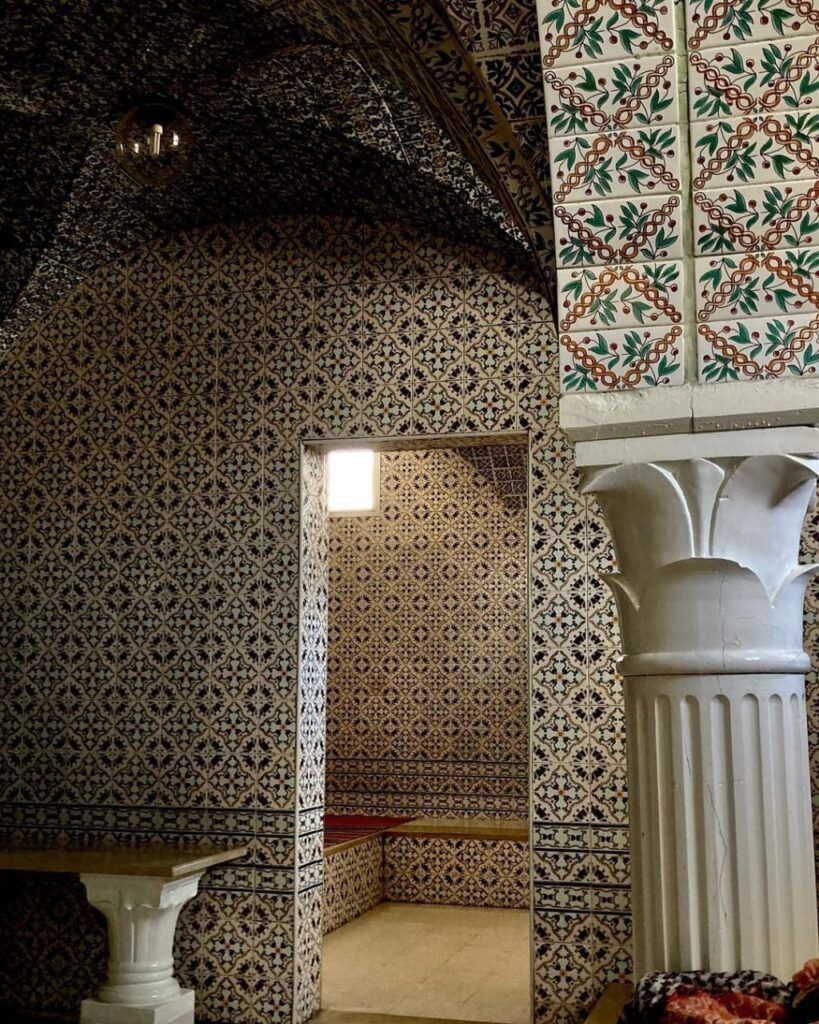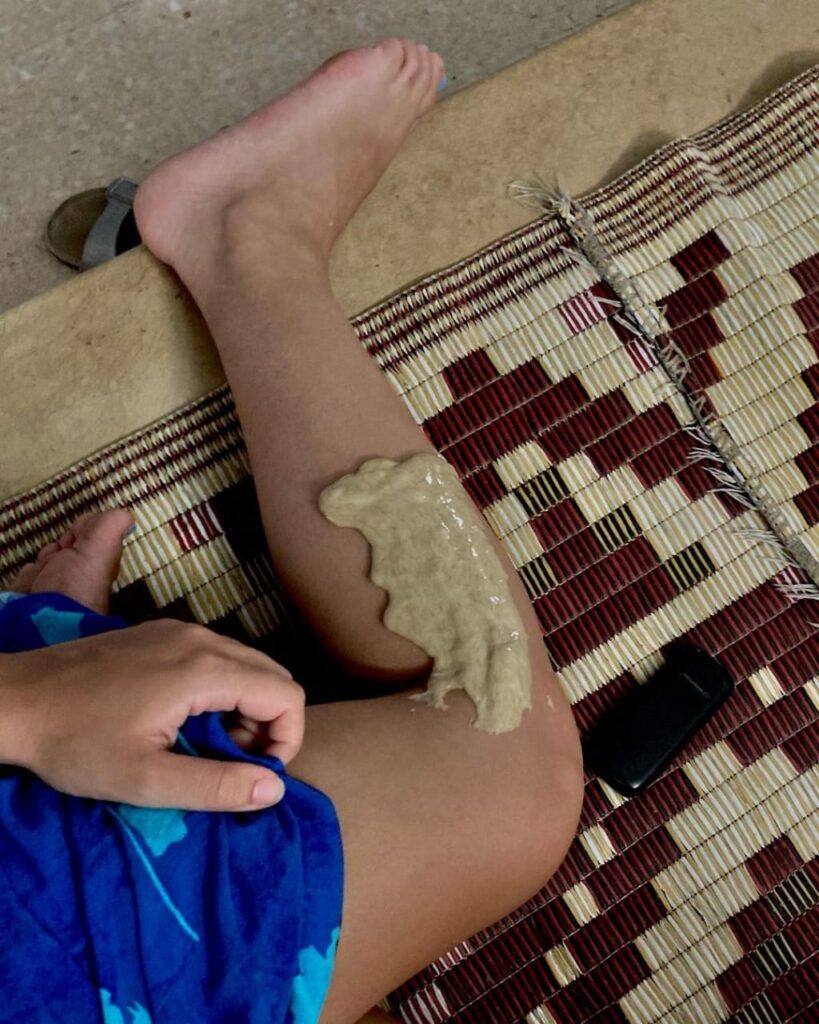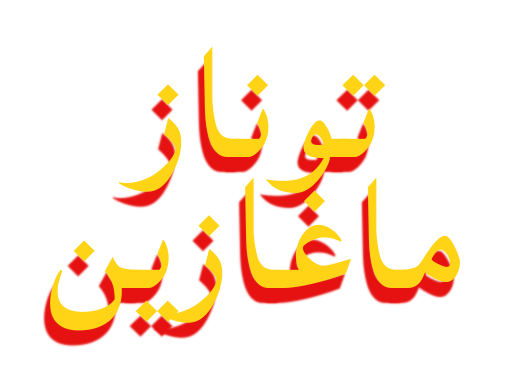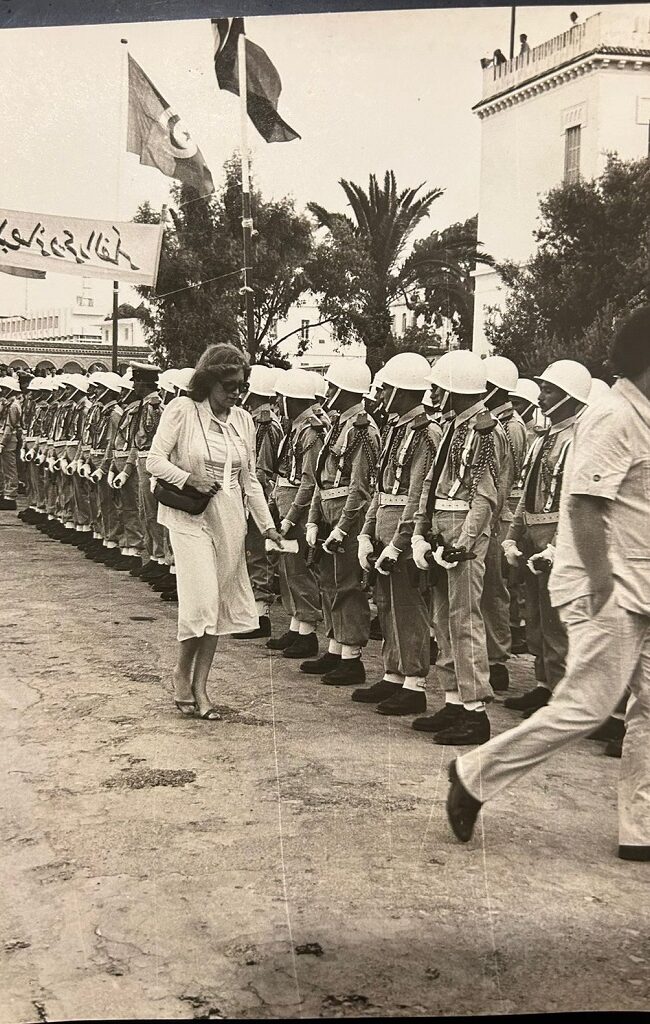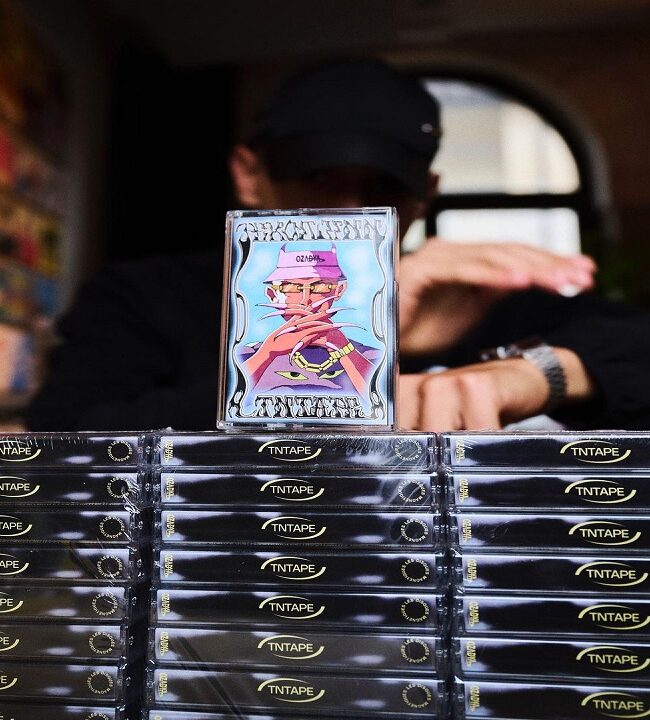
Farah Arfaoui’s Hamem perspective
Via Farah Arfaoui
For the women, the staff was much smaller, initially consisting of two people. In her beautiful booth at the reception desk sat the manager, covered in beautiful jewelry, and in a corner of the same room stood the waxer. It was not until the beginning of the twentieth century that the « harza» joined the team : she drew the water, scrubbed the clients, and helped them on request. This important numerical difference in personnel can be explained by the difference in practices. Indeed, the men went to the hammam with only their spare clothes. The hammam was responsible for providing them with utensils and products, which required the intervention of a larger staff. For their part, the women were accompanied by their servants, who took care of them. Otherwise, they helped each other among the women of the same family, both for scrubbing and care, and for drawing water. In addition, they carried all their belongings with them. These utensils were part of their wedding trousseau and were a source of pride, allowing them to compete with other clients.
